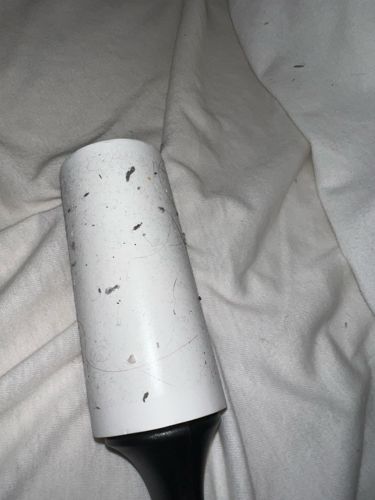Carpet Beetle (larva)
Scientific Name: Dermestes lardarius (Larder Beetle) or members of the genera Anthrenus or Trogoderma (Varied, Black, or Furniture Carpet Beetles). It's difficult to specify the exact species from the image as it shows what appears to be shed larval skins or fragmented larvae, consistent with carpet beetle activity.
Order & Family: Order: Coleoptera, Family: Dermestidae
Size: Larvae typically range from 2mm to 5mm in length, depending on the species and developmental stage. Adults are usually 2-4mm.

Natural Habitat
Indoors, especially in areas with human or animal habitation: carpets, rugs, upholstered furniture, closets, attics, museums, and anywhere natural fibers, pet hair, or dead insects accumulate. Outdoors, they can be found in bird nests, animal nests, and spider webs.
Diet & Feeding
Carpet beetle larvae are known scavengers, feeding on a wide variety of animal products. Their diet includes natural fibers such as wool, silk, fur, feathers, and leather, as well as pet fur, dead insects, and dried animal remains. They are notorious for damaging carpets, clothing, upholstered furniture, and museum specimens.
Behavior Patterns
Carpet beetle larvae are typically found in dark, undisturbed areas where their food sources are abundant. They are often brought into homes on infested items or through cracks and crevices. Both larvae and adults are active, though adults are known to fly and may be attracted to sources of light.
Risks & Benefits
Risks: Significant pests in homes, museums, and warehouses, causing damage to natural fibers (wool, silk, fur, feathers), carpets, clothing, and stored food products. They can trigger allergic reactions in some sensitive individuals due to shed larval skins and fecal matter. Benefits: In nature, they play a role as decomposers, breaking down organic matter like animal carcasses and detritus.
Identified on: 9/2/2025